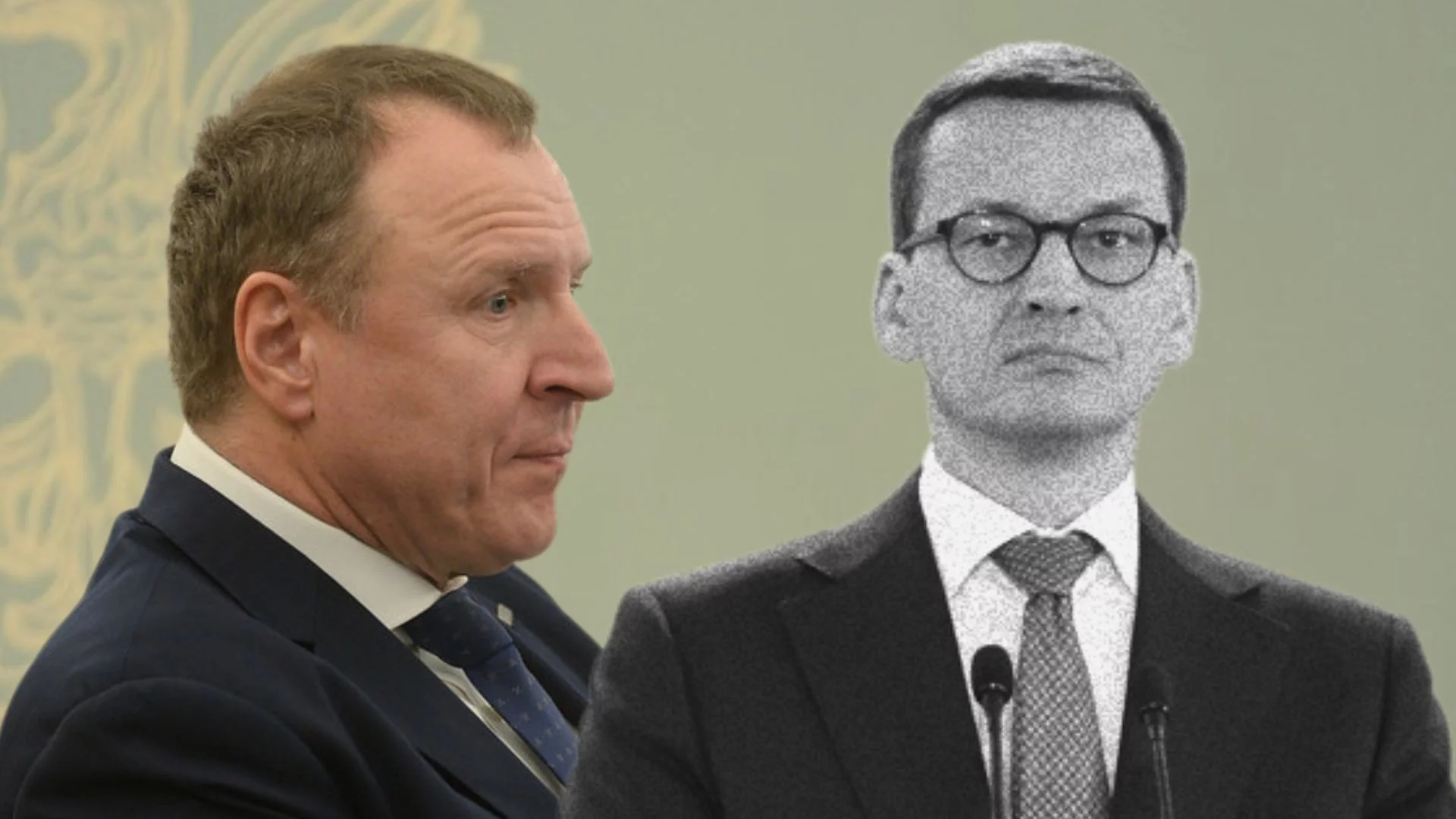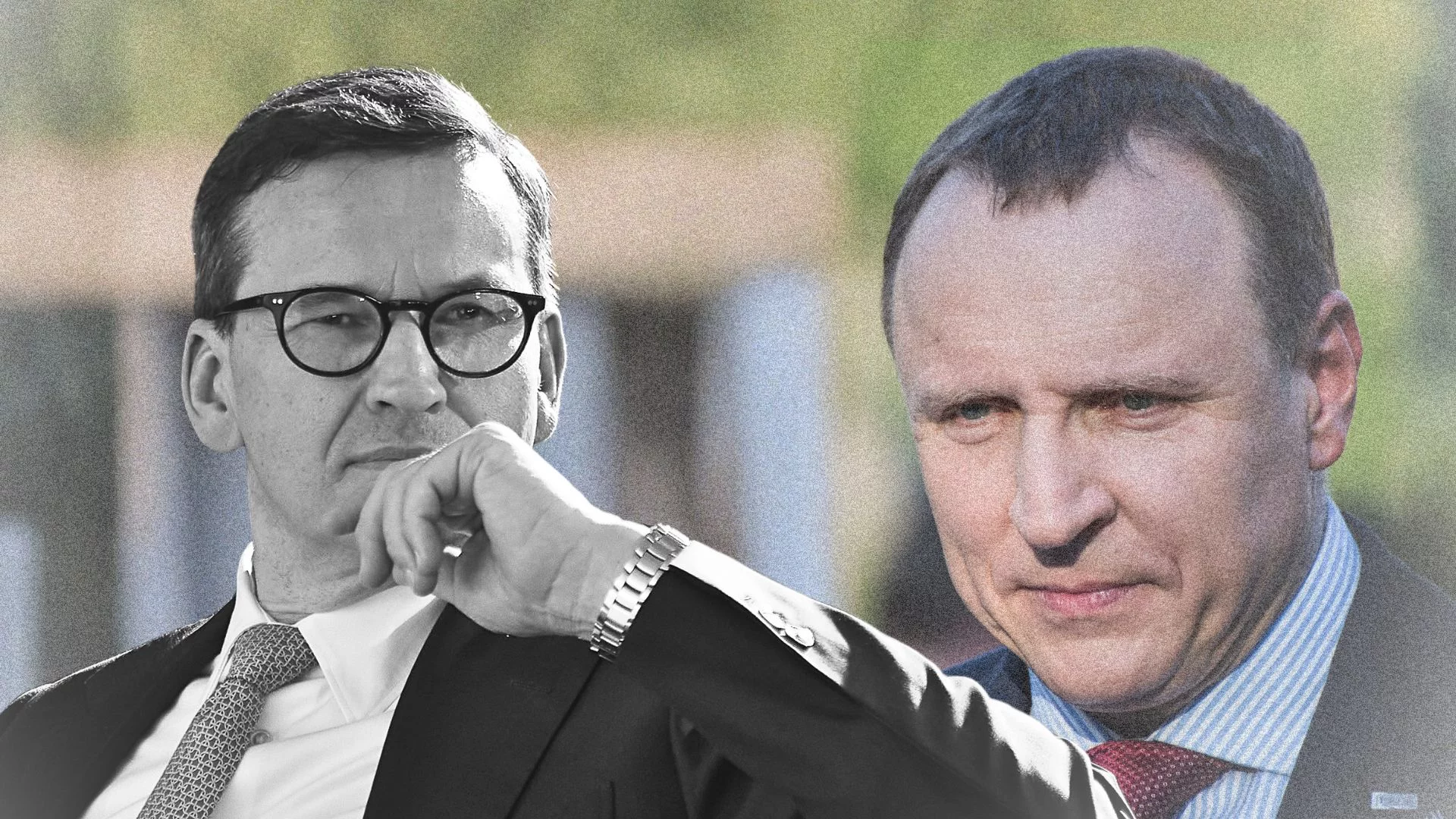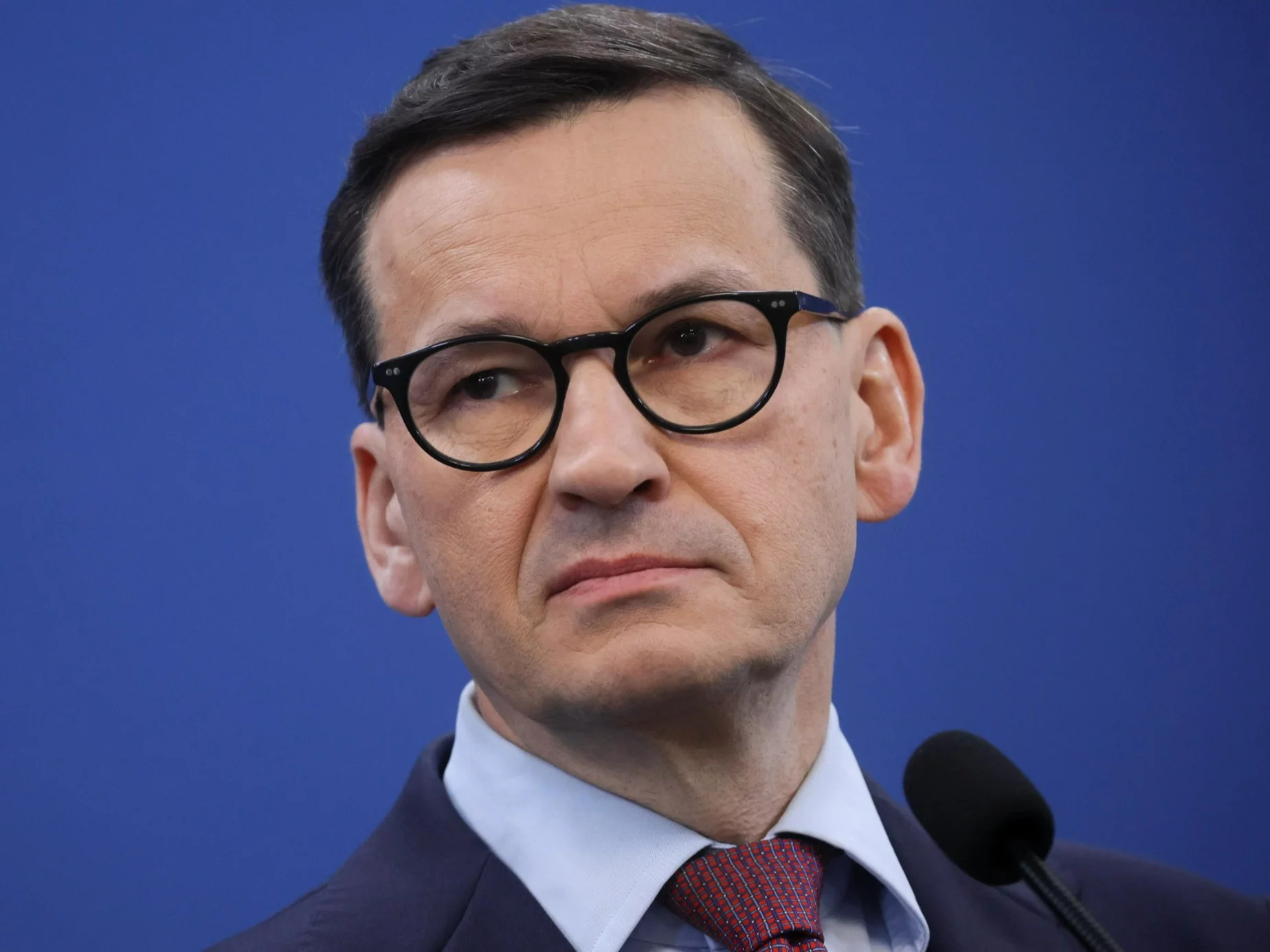The fact that military health service is in need of reform has been discussed within the uniformed medical community for years. The issues raised include the need to consolidate fragmented structures, build a coherent command and control system, and address the shortages of uniformed medical personnel. One of the most pressing needs in the current security situation is, however, integration of the military and civilian health services.

The COVID-19 pandemic and recent floods have demonstrated that in the event of a crisis, when the demand for medical assistance dramatically increases, the civilian healthcare system proves insufficient despite the enormous commitment of medical personnel. “Similarly, in the event of an armed conflict or crisis, the military health service will not be able to effectively care for wounded soldiers or civilians without the support of the civilian one,” emphasizes Prof. Jerzy Sieńko, Plenipotentiary of the Minister of Health for cooperation with medical entities supervised by the Minister of National Defense, and National Consultant for Surgery. This has been observed in Ukraine, where both wounded soldiers and civilians are admitted to civilian hospitals.
The two medical components must urgently become an integral part of the healthcare system for times of crisis and war. However, as pointed out by LtGen Grzegorz Gielerak, MD, PhD, Head of the Military Institute of Medicine – National Research Institute (WIM-PIB) in Warsaw, we currently lack effective procedures governing cooperation between the civilian and military health services in such situations, which can pose a real threat for national security.
The Right Direction
As pointed out by Tomasz Sanak, MD, a paramedic, Acting Head of the Department of Disaster Medicine and Emergency Care and Head of the Department of Emergency Medical Services at the Jagiellonian University Collegium Medicum, it is necessary, among other things, to synchronize emergency response protocols and rules of triage (segregation of casualties in mass casualty incidents) for medics of both systems, conduct field exercises involving hospitals and military units, on top of injury registers and data exchange that would allow for immediate translation of battlefield experience into civilian practice.

It is equally important to prepare the civilian medical personnel to operate in emergencies, as most of them are unfamiliar with the specific character of battlefield injuries and tactical combat casualty care (TCCC) procedures. “Combat injuries require a different approach than those sustained during peacetime. They often include multi-organ trauma, massive hemorrhages, there are numerous situations when medical assistance must be provided simultaneously to many people,” says Dr Tomasz Sanak. In his opinion, the absolute minimum for civilian medical personnel is to learn TCCC procedures, advanced severe bleeding control techniques, treatment of blast injuries and the triage procedure. Another important aspect is learning how to organize medical care in crisis situations, such as setting up field dressing stations or conducting medical evacuation in danger zones.
“Apart from joint exercises and trainings for civilian and military medical personnel, another important change should be the inclusion of battlefield medicine and disaster medicine in the programs of civilian medical studies,” says General Grzegorz Gielerak. According to the Military Medical Service Department at the Ministry of National Defense, the ministries of defense and health are already working on such modifications to medical education programs.
Capt (Res) Damian Duda, Head of the “W Międzyczasie” Foundation and a battlefield medic that helps soldiers in Ukraine, points out that it is crucial to make use of the lessons learned from the war in Ukraine in military and civilian training programs, as similar scenarios might also happen in the event of a conflict in Poland. Currently, according to the NATO TCCC ‘golden hour’ concept, a severely wounded soldier should receive help from qualified medical personnel within 60 minutes from suffering a traumatic injury. “In the light of the conflict in Ukraine, this rule becomes meaningless. There are no safe evacuation routes or a possibility to use MEDEVAC helicopters, so a wounded soldier sometimes has to wait two or three days to be evacuated. This situation requires Prolonged Field Care (PFC) at medical points located near the frontline,” says Dr Tomasz Sanak, who, among other things, has trained members of emergency medical teams of the Lviv region. “This proves how important it is to provide widespread PFC trainings and teach medical personnel how to operate in difficult conditions,” he adds.
Various Concepts
The question that remains is who would organize battlefield medicine trainings for military and civilian medical personnel. According to General Grzegorz Gielerak, WIM-PIB could become the main coordination center for such activity, as for over a decade it has uniquely combined the functions of a clinical hospital, with one of the largest trauma centers in Poland, a research and development center, and a training provider.
Therefore, the director of WIM-PIB has presented to the Ministry of National Defense a concept of co-establishing, with the participation of the institute, a National Center of Excellence for Battlefield Medicine (Krajowe Centrum Doskonalenia Medycyny Pola Walki). “It would play a key role in the national system of training medical personnel in TCCC, developing innovative methods to treat combat injuries, implementing modern medical technologies, and conducting scientific research on optimizing medical care in extreme conditions,” explains General Grzegorz Gielerak. The exercises and courses, on the other hand, would be organized in several regional training centers established at selected medical institutions, such as military hospitals or civilian trauma centers, which have at their disposal well-developed simulation medicine facilities.
Similar trainings were conducted by WIM-PIB instructors for the district hospital in Hajnówka, which over a year ago received support from the institute within the frame of Operation Safe Podlasie. The hospital in Hajnówka admitted soldiers and officers who required immediate professional medical assistance after having been injured during their service on the eastern border. Therefore, the WIM-PIB Medical Simulation Center conducted a cycle of courses for the hospital personnel on advanced battlefield medical procedures, including strategies for treating patients with multiple injuries (Damage Control Resuscitation – DCR and Damage Control Surgery – DCS). “The program had been developed in cooperation with the hospital, as an element of a training standard that would apply to medical personnel from all over Poland. As a result, the classes responded to the needs of the medical personnel and the scenarios of exercises were close to the situations that the team from Hajnówka can encounter in practice,” explains General Grzegorz Gielerak.

The Ministry of National Defense, however, has a different vision of organizing trainings for its medical personnel and opts for dispersing the training and educational centers. According to this concept, the Military Medical Training Center in Łódź would become the training center for paramedics, both military and civilian, the 5th Clinical Hospital in Kraków would take on the role of a specialization center for military paramedics, and WIM-PIB would be the largest center educating military medical specialists. Also, in the future, the re-established Military Medical Academy in Łódź would educate, among others, military doctors, nurses, paramedics and psychologists.
A separate role in the system will be played by the Medical Forces Command, established recently by decision of Władysław Kosiniak-Kamysz, Deputy Prime Minister and Minister of National Defense. “The Command will focus on developing battlefield medicine capabilities, including individual training of medical personnel and coordination of medical units at the tactical and operational level, in close cooperation with military hospitals and civilian medical entities,” says Col Mariusz Kiszka, MD, Commander of Medical Forces, adding that the new military healthcare structure is being created from scratch, so it is expected to become operational in 2028.
A Medical Legion
The MoND has already launched the Military-Friendly Hospitals program as part of military-civilian cooperation. The ministry offers civilian hospitals that join the program TCCC trainings and financial support for modernization or purchase of modern medical equipment. In return, the civilian hospitals provide wider access to medical services for people connected with the military. Another initiative of the MoND which is to broaden civilian battlefield medicine competencies is the Medical Legion established by decision of Władysław Kosiniak-Kamysz. This volunteer formation is to bring together people from the civilian medical environment who want to support national health security along with the army. They will participate, among other things, in disaster medicine and battlefield medicine trainings with military medical units. “It will also allow us to build a database of civilian medical personnel ready to support the military,” says the Deputy Prime Minister.
The Medical Legion is modeled on the recently established Cyber Legion, an institution which prepares civilian cyber security experts to support Cyberspace Defense Forces. “In the event of a crisis or conflict, doctors, nurses and paramedics will have to provide help to every injured person, regardless of the nature of suffered trauma. For that reason, it is a good idea to undergo appropriate training now and gain knowledge on how to deal with typical battlefield injuries,” argues Capt (Res) Damian Duda, encouraging people to join the Medical Legion.
Another person to offer tactical medicine trainings to civilian doctors, nurses and paramedics is Prof. Jerzy Sieńko. Together with the 12th Mechanized Brigade in Szczecin, he is initiating a pilot program for doctors and nurses from the West Pomeranian Voivodeship. In October, 50 medics, including surgeons, orthopedists, anesthesiologists, neurosurgeons, and thoracic surgeons, will be trained on field hospital operations at the training ground in Drawsko Pomorskie. According to current regulations, medical personnel can be called up once every two years for field military medical training, but these courses are not popular among civilians because they provide little benefit. “This time, we have developed a training program corresponding to the trainees’ education, which aims to expand their knowledge and skills,” assures Prof. Jerzy Sieńko. The doctor hopes that in the future the program will include other voivodeships as well.
Dr Tomasz Sanak also teaches civilian medics the basics of operating in crisis in his extreme medicine workshops/courses. “We focus on learning correct rescue procedures, i.e., stopping hemorrhages, recognizing tension pneumothorax and upper airway obstruction, as well as working with limited resources and in the reality of a mass casualty incident,” says Dr Tomasz Sanak.
It is clear that the civilian and military health services acknowledge the need to integrate their structures and prepare for a possible armed conflict or crisis. There is an increasing number of initiatives concerning the cooperation of the two environments. Hopefully, joint procedures and training programs will soon be developed, and comprehensive cooperation in this area will begin. To this end, it is crucial that the decision-making process is as short as possible, since the resilience of any country is determined not only by a strong army but also the effectiveness of its medical infrastructure.







